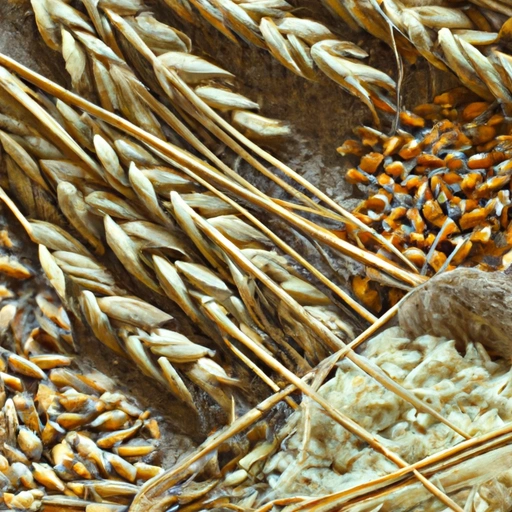Grain
Description

Grain, the seed of various grasses, is a fundamental food source that forms the backbone of human nutrition across the globe. From the flatbreads of the Middle East to the rice paddies of Asia, grains are as diverse as the cultures that rely on them. Grains come in many forms, including wheat, rice, corn, barley, oats, rye, and millet, among others.
Common uses
Grains are commonly used as a staple food, providing a significant source of energy for many populations. They can be consumed whole, ground into flour for bread and pastries, or processed into various forms like cereal, pasta, and snacks.
Nutritional value
Calories
On average, grains provide about 340 calories per 100 grams or approximately 3.5 oz. This can vary depending on the type of grain.
Protein
Grains contain about 8 to 15 grams of protein per 100 grams (3.5 oz), with quinoa and buckwheat being higher in protein content.
Fat
Most grains are low in fat, containing 1 to 5 grams per 100 grams (3.5 oz), with the exception of certain grains like oats which have slightly higher fat content.
Carbohydrates
Carbohydrates in grains can range from 70 to 80 grams per 100 grams (3.5 oz), making them a rich source of this macronutrient.
Vitamins
Grains are a good source of B-vitamins, particularly thiamin, riboflavin, niacin, and folate. Some grains are also fortified with additional vitamins.
Minerals
Grains provide essential minerals such as iron, magnesium, phosphorus, zinc, and selenium. Whole grains are particularly rich in these nutrients.
Health benefits
Consuming whole grains as part of a healthy diet can contribute to improved digestive health, reduced risk of heart disease, and better weight management. The fiber in grains can help with satiety and bowel regularity.
Potential risks
While grains are generally healthy, overconsumption of refined grains can lead to health issues like obesity and type 2 diabetes. Some individuals may also have allergies or intolerances to certain grains, such as gluten intolerance or celiac disease, requiring them to avoid wheat, barley, and rye.
Common recipes
Grains are used in a plethora of recipes such as breads, pastas, pilafs, porridges, and cereals.
Cooking methods
Grains can be boiled, steamed, baked, or fried depending on the dish being prepared. They can also be soaked or fermented for different textures and flavors.
Pairing with other ingredients
Grains pair well with a variety of foods including vegetables, legumes, meats, and dairy products, making them a versatile component in many dishes.
Summary
Grains are an essential ingredient around the world, valued for their versatility, nutritional benefits, and the role they play in a myriad of culinary traditions. They provide energy, essential nutrients, and can be prepared in countless ways to suit any palate. Understanding the balance between whole and refined grains and their impact on health is important for incorporating grains into a balanced diet.